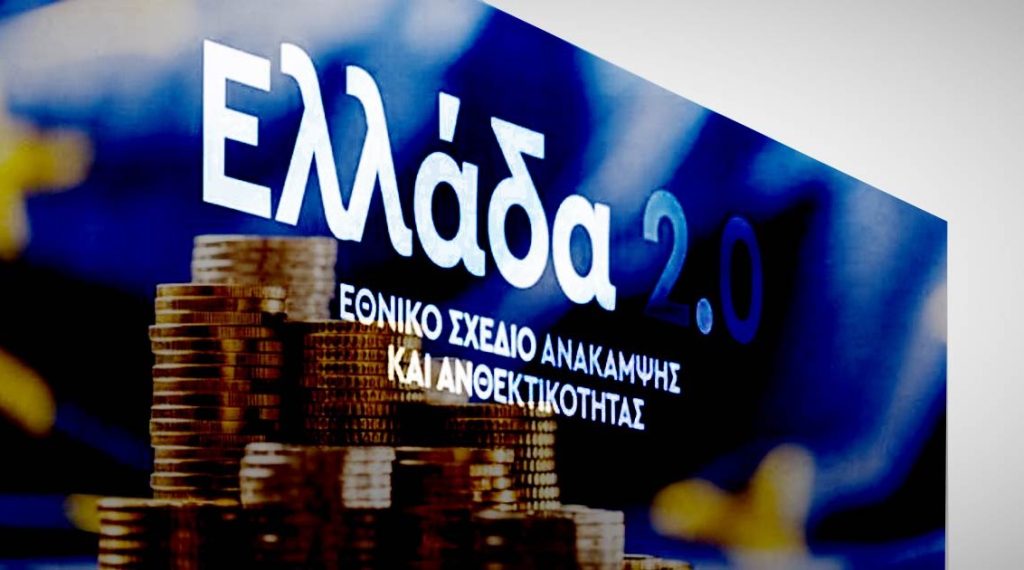
Determined to invest in the next day, using the full range of available resources (such as the Recovery Fund) appear Greek SMEs. 86% of those that intend to make at least one investment in the next five years. of the SME sector. Percentage that is by 10% higher compared to SMEs that made investments the previous five years.
This conclusion is drawn from the six-monthly survey of 600 SMEs carried out by Economic Analysis Division of the National Bank of Greece , according to which theinterest of SMEs in the use of the Recovery Fund is high, with medium-sized enterprises being the main beneficiaries. At a rate of 55% - approximately 1 in 2 - declares that they will participate in the actions of the Fund.
The willingness to invest through the Recovery Fund from medium-sized enterprises is increased by 4% compared to that observed in the previous NBG survey. The estimated amount of their investment plans has also increased, which amounts to 5.6 billion euros (compared to 5 billion euros in the previous semester). 39% of these, however, correspond to initial stage investment plans.
Very small businesses are hesitant
The increased investment willingness of medium-sized enterprises compensates for the decrease in the mobilization of very small enterprises. The reduction amounts to 9% compared to the previous semester. The estimated amount of investments corresponding to them is also reduced. The amount is calculated 3.7 billion euros (compared to 4.5 billion euros in the previous semester). 65% of these concern projects which are still at an early stage.
Fixed end at 49% is the percentage of small businesses that intend to make use of the actions from the Recovery Fund. At the same time, the total amount of investments increased, which is estimated at 5 billion euros. In the previous semester, this amount amounted to 4,7 billion euros.
According to the conclusions of the research, very small businesses prioritize their participation in other investment programs, such as:
- NSRF actions
- development law
- or other programs
The percentage for very small businesses is even comparatively higher (34% against 24% of medium ones).
In general, medium-sized enterprises are targeted to a greater extent for loans from the Recovery Fund (67% of the sector, compared to 53% of very small ones). On the contrary, very small businesses show a stronger interest in other support programs. 1/3 of them intend for the first time to participate in NSRF or Development actions.
Of the SMEs that express an interest in the Recovery Fund (47% of SMEs), 50% wish to combine it with some other tool. At the same time, an additional 13% of the sector shows an exclusive preference for other investment programs. Thus, the total interest in investment support is formed at 60% of SMEs.
A common conclusion according to the EIB is that:
"Greek businesses appear determined to invest in the next day, utilizing the full spectrum of available resources."
The criticality of the Fund in maintaining the investment awakening of the Greek business sector is made evident by the fact that 15% declare that they invest precisely because they have access to these resources. A further 32% say they are facilitated by access.
Investment plans are maturing
Based on the conclusions of the survey, 1 in 4 companies that intend to use the Recovery Fund declares that they now have mature investment plans (from 1% in the previous semester), of estimated value 3.7 billion euros. As for the rest of the projects (with total investments estimated to potentially approach 14 billion euros), 1/5 of the sector is at the stage of drawing up its investment plans (compared to 17% in the previous semester), while the remaining 55% is still at a very early stage (evaluating its alternatives) and increasing, as the EIB observes " the uncertainty of the implementation of the specific plans".
So with the majority of the sector having investment plans in still early stage, must be emphasized need to speed up investment training and approval, notes the EIB, "since the limited time horizon of the actions from the Recovery Fund (until 2026) is now added and the cycle of ECB benchmark interest rate hikes, which is expected to lead to an increase in financing rates and therefore the cost of investments".
Despite the improvement in preparedness, it is important, according to NBG, the need to accelerate the investment plans given both the finite duration of the loans (until 2026) and the expected increase in financing costs (increase in ECB reference rates by 125 bps . since last July).
Green investments for the Recovery Fund
He makes more special reference to green investments. Although they are a catalyst for the competitiveness and resilience of the economy, they show a relatively low degree of preparedness. 15% of these projects are mature compared to 20% on average in the remaining eligible categories. In part this is due to increased complexity of green investments. Infrastructure investments are often required first (e.g. network availability for net metering installation), while at the same time the increased cost of construction (+12% compared to 2021) acts as an inhibitor to the creation of new green facilities.




